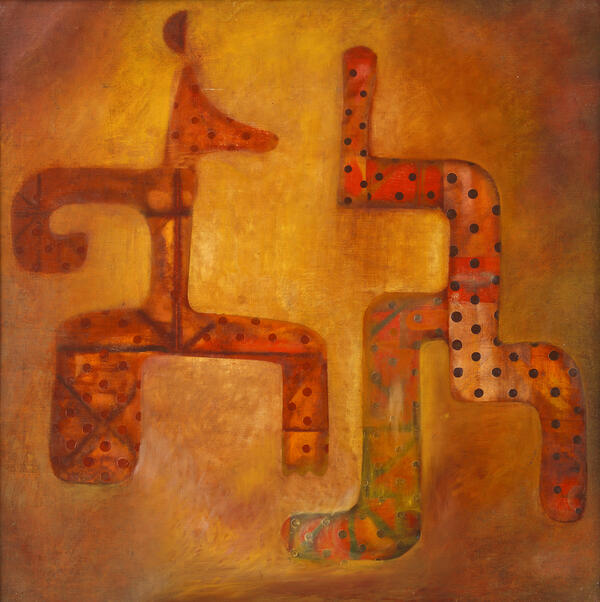Vladimir Panteleimonovich Muravyov was one of the artists who took decisive steps towards freedom of spiritual and creative self-expression in the post-war years. The 1960s were the period of the Khrushchev Thaw, however, Socialist Realism was still the only officially recognized artistic style in the USSR. The artist, on the other hand, chose to create art free from ideological dogma.
For more than 40 years, Muravyov lived and worked in Moscow, but Kostroma was always in his heart. Vladimir Mukhin’s Kostroma period was an important milestone in his development as a person and an artist. Kostroma was the place where he was born, which he left to fight in the war, to which he returned and enrolled into a local art school, where he first became a teacher in the “Kostroma outback”, and where his first serious works appeared.
Vladimir Muravyov did not fit well into the Social Realist landscape of the provincial city, and at the end of 1958, the 34-year-old artist left for Moscow and never returned. His style came into its own in the Moscow underground scene, which was more tolerant to non-traditional ideas.
In Moscow, he worked as an illustrator for the publishing house “Soviet Writer” for 20 years. He devoted all his free time from earning money to painting. But his works were exhibited very rarely. At first they were displayed in apartment exhibitions, and, from the 1990s onward, in museums and galleries. In 1991, his solo exhibition was held in Chicago (USA). His first exhibition in his homeland took place in 1998 at the Kostroma Art Museum.
The artist was always interested in issues of a philosophical and psychological nature, complex reflections of a person’s inner life, and mysteries of being. At the same time, the artist addressed the matters of creating new forms.
One of these methods of
creating forms is clearly visible in his early painting called “Topotukha”
(1962). Vladimir Muravyov placed the figures of the dancers in a blazingly
bright color space. Their bodies are generalized to an extreme and resemble
skeletons that have frozen in the form of some kind of symbol. This work was
inspired by the artist’s vivid impressions of a dance that he saw being
performed by a group of villagers somewhere in the northern parts of the
Kostroma Oblast.




